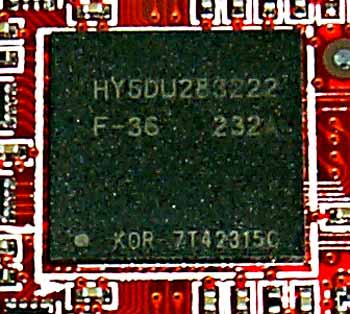This Digit Life review looks at both the Radeon 9500 and Radeon 9700 from Gigabyte. And it looks at the BGA memory modules.
As we can see the main difference between the 9500 and 9700 for the memory bus is that they have just removed half the chips to make the 128-bit memory bus. My understanding is that the BGA modules account for 32bits of bus width per module, so for the 9700 PRO each module accounts for part of the 256bit bus. This means, to my understanding, that each of the modules is 128MB to account for the correct amount of RAM on a 256bit bus.
Now, the 9500 has half of its bus removed and is only 64MB, so my understanding would be that each of the modules are are only 64MB to make the 64MB on a 128bit bus. However, the HYNIX part number (HY5DU283222 F-36) for the memory used in this case list the modules as being '128M', which to me indicates 128MB of memory.
I'm obviously missing something here, so if anyone can clear up my misconceptions it would be appreciated!
As we can see the main difference between the 9500 and 9700 for the memory bus is that they have just removed half the chips to make the 128-bit memory bus. My understanding is that the BGA modules account for 32bits of bus width per module, so for the 9700 PRO each module accounts for part of the 256bit bus. This means, to my understanding, that each of the modules is 128MB to account for the correct amount of RAM on a 256bit bus.
Now, the 9500 has half of its bus removed and is only 64MB, so my understanding would be that each of the modules are are only 64MB to make the 64MB on a 128bit bus. However, the HYNIX part number (HY5DU283222 F-36) for the memory used in this case list the modules as being '128M', which to me indicates 128MB of memory.
I'm obviously missing something here, so if anyone can clear up my misconceptions it would be appreciated!





